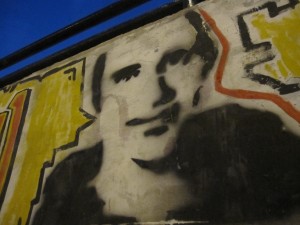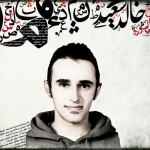
Click here to read the article: Viral Images: On the case of Khaled Saeed (PDF)
My article (June 2012) and collection of art on Khaled Saeed has been used as the basis of a feature piece in the UK Art Monthly magazine, titled “Viral Images: On the case of Khaled Saeed.” Beautifully written by London curator Sophie J Williamson, she expands on the threat posed by viral imagery to Morsi’s regime. With the author’s permission, I have uploaded a copy of the article to my site.
Below are some quotes from the article:
“The photo [of the brutalised khaled Saeed] itself was taken after an autopsy, which sparked disputes about whether some of the injuries seen in the image were delivered before his death or were the outcome of postmortem examinations. Saeed’s neighbour, Amro Ali, has since published an in-depth critique of the events, “Saeeds of Revolution: De-Mythologizing Khaled Saeed”, which gives an insight into Saeed’s somewhat dubious past. However, the discrepancies in these details were not important to the thousands of Egyptians who redistributed the image through their Facebook and Twitter accounts. The image quickly became independent of any objective retelling of its story; it stood for itself as telling of a seemingly objective reality of police brutality and the loss of individual dignity prevalent across the country”
“In Hito Steyerl’s insightful essay ‘In Defense of the Poor Image’, she describes the life of the online image as one of acceleration and deterioration; ‘a copy in motion’. The ‘poor image’ is one which has been ‘thrust into digital uncertainty’ – somersaulted through successions of uploading, downloading, reformatting, re-editing and
redistribution; quality is transformed into accessibility. In turn, image-value is defi ned not by resolution and content but by velocity, intensity and spread. This is not only true of the physical quality of the image, as Steyerl speaks about it, but also of the depth of meaning, understanding and context of the image.”
“The economy of poor images, with its immediate possibility of
worldwide distribution within a structure that facilitates almost
instantaneous appropriation, enables the participation of a
much larger group of producers than ever before. Users become
the editors, critics, translators and (co-)authors within a constant
frenzy of imagery production and re-production.”
“The vague language of President Mohamed Morsi’s
new constitution, especially with regard to freedom of
expression, inevitably reinforces concerns over the growing
tyranny of the permanent state of emergency declared
since the revolution. Using Giorgio Agamben’s definition
of sovereign power as the ability to decide on the state of
exception, to defined what is permitted – who is included
and who is not – Morsi effectively places himself outside
the law. Agamben argues that sovereignty is therefore
based on the ability to impose exclusion and is ‘the hidden
foundation on which the entire political system rested’.
While for Morsi, and Hosni Mubarak before him, this is
possible with established figures and organisations, it is
much harder, arguably impossible, to censor in its entirety
online activity which is spearheaded not by an individual but
by the masses”
“The image of Saeed proves that the digital image is not
as ephemeral as we might commonly think; as Steyerl argues: ‘just as a photograph is lodged in paper, the digital image is lodged in a circulatory system of desire and exchange.’”



